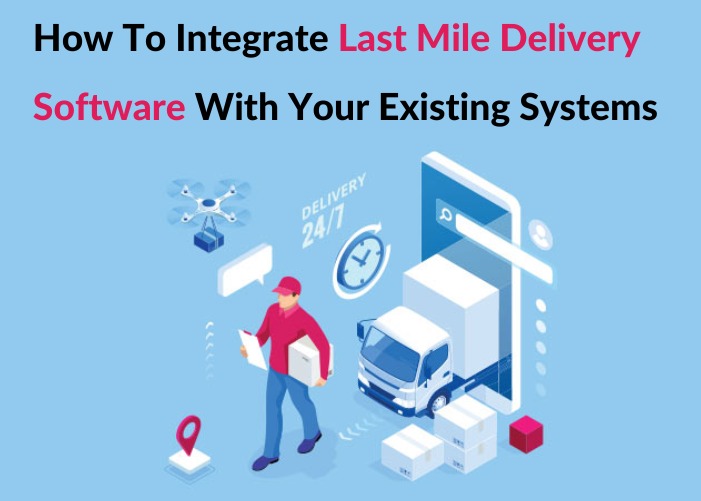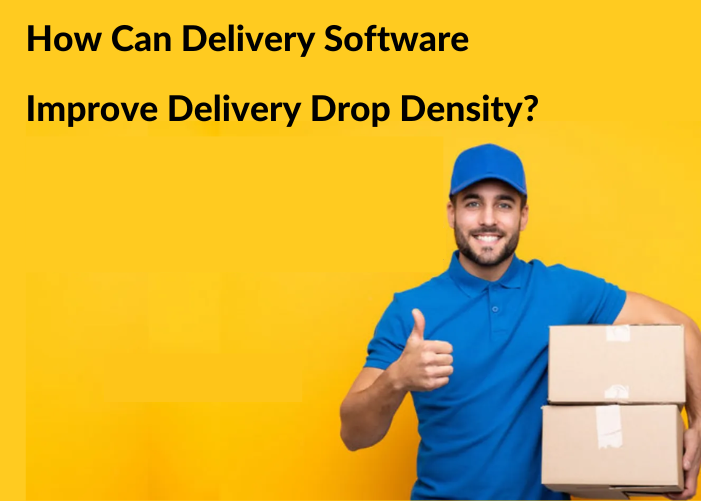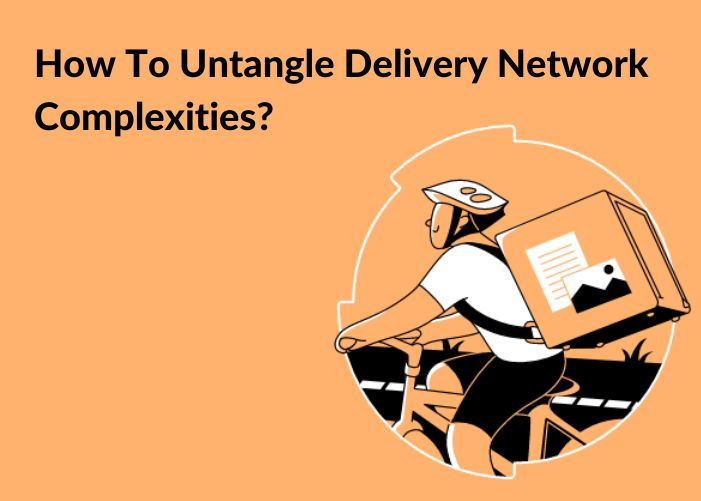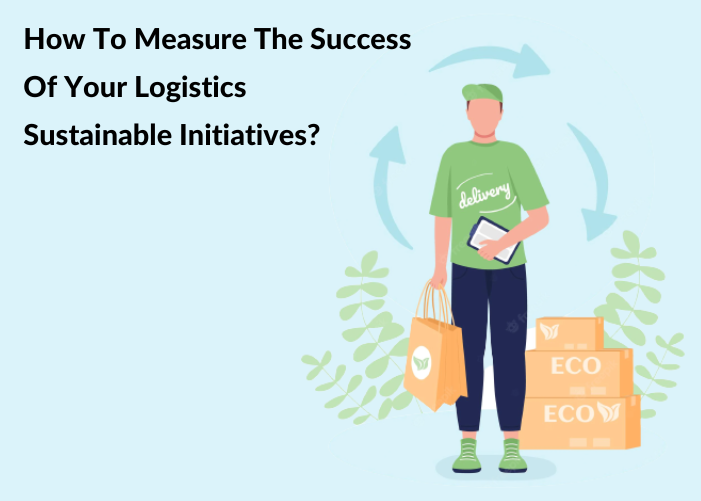We live in times that are often called the “Delivery Economy!” From groceries to medicines to clothes to TVs…well, the list of items that we now receive at our doorstep is endless!
However, this brings challenges for all stakeholders involved: the trusty driver working odd hours and battling inclement weather, the brand that is selling you its product, the Logistics Company that must run a profitable operation while achieving Customer Satisfaction…
This article will focus on highlighting the importance for Logistics Companies that must seamlessly integrate their last-mile delivery software with their existing systems as well as with those of their collaborators along the supply chain in order to achieve successful operations.
1) Firstly, what is “last-mile delivery”?
As the name suggests, “last-mile delivery” is completing order delivery across the last leg. It generally begins at the final warehouse, distribution center, restaurant or shop and ends at the final destination, typically at the customer’s doorstep.
Modes of transportation are varied, including a van, bike, cycle, or even by foot. Regardless of the mode, this last leg of the delivery journey is the most complex, costly, and challenging part of the entire supply chain.
~~ The cost of last-mile delivery accounts for anything between 30%-50% of a firm’s total shipping cost. This high cost is a result of the “problem of efficiency” i.e. Making numerous stops with a low drop-size. Additionally, deliveries are hampered by other factors like distances, road conditions, parking, and traffic congestion ~~
2) How can you integrate last-mile delivery with your existing systems, and with your supply-chain partners?
Running a last-mile operation is a massive, challenging task! Among other things, it requires integration with your existing systems, as well as with your distribution partners and platforms, including marketplaces, warehouses, stores, and carriers.
Outsourcing last-mile delivery: Although large retail companies typically run their own last-mile operations to retain control of customer experience, this is infeasible for most companies. Therefore, they outsource their last-mile logistics, often across various delivery channels.
~~ The “Amazon-ization” of last-mile delivery i.e. how Amazon has radically crashed delivery times, and therefore, has compelled Logistics Companies to improve their last-mile delivery. This cannot be done without using modern technology and integrating it seamlessly with internal systems and across the supply-chain. ~~
Let us look at some ways to optimize last-mile delivery:
i) Analyze your existing operations: The first step is to analyze your operations thoroughly. Understand your strengths-weaknesses, how well – or, poorly- you currently integrate with your internal systems, supply-chain partners, customers (etc.). Identify gaps and areas for improvement.
ii) Select the correct partners: Integrating your delivery software with your internal systems also has an “external component” because you are constantly working with external partners, platforms, and distribution channels.
Therefore, be sure to select only those partners that align well with you. Your products, business model, customers (etc.) must guide your selection of partners, including 3PLs, delivery platforms, marketplaces, or wholesalers. Develop a clear workflow for managing/shipping orders, exchanges, returns, refunds, inventory, payments, and client data across various channels.
~~ Last-Mile Delivery Software: Top Features ~~
There isn’t a one-size-fits-all solution for the various last-mile scenarios, since each market has its unique challenges. Therefore, the software must be tailored to suit the unique requirements and stakeholders it interacts with.
- Route Optimization: Identifies the most efficient routes for drivers. Balances out variables including cost, number of stops, route options, weather, traffic, distance, and delivery windows. Advanced solutions can make real-time changes to planned schedules
- Real-Time Tracking: Customers and dispatchers can track vehicle positions in real time via GPS technology on a driver’s smartphone to track fleets. No additional hardware required
- Auto-dispatch: Saves time and cost by automatically matching deliveries with drivers using pre-defined parameters
- ETA: Uses predictive analytics and ML to accurately predict when the driver will arrive at the customer’s doorstep. Status updates are sent at suitable intervals
- ePOD (electronic proof-of-delivery): Enables customers to sign electronically on the delivery agent’s smartphones/tablets
- Data dashboard: Displays all metrics and KPIs to track and monitor operations.
iii) Select your 3PL wisely: Importantly, check system compatibility while selecting your 3PL. Also, the number and location of your 3PLs fulfillment centers are key to success. Too many, or too few, will be non-optimal.
iv) Stay focused on creating a best-in-class Customer Experience: Ultimately, you are in business to serve your customers and keep them happy. Therefore, all your systems and how they talk to one another must be geared to one common goal i.e. to deliver packages to customers as quickly (efficiently) as possible and at the most economical rates possible.
3) Integrating your delivery software with 3rd parties: As mentioned earlier, the integration of your delivery software with your internal systems also has a third – “external” – element i.e. your third-party collaborators.
Efficient, and seamless, collaborations with your 3PLs, supply-chain partners, suppliers (etc.) are key to your success.
For example, 3PLs generally deploy elaborate technology to enhance their operational efficiency. Be sure that their systems (e.g. warehouse management, transportation management) integrate easily with your delivery (and, other) systems.
~~ Plan Ahead For Future Integrations For New Delivery-Channels e.g. Crowdsourced Delivery ~~
- Becoming increasingly popular among restaurants, grocers, and specialty retail stores. Here, firms deploy non-professional, local couriers to deliver parcels
- The leading advantage is the ability to receive and fulfill orders faster. Saves operating-costs.
- Example: Uber Eats, Amazon Flex
4) Future integrations with upcoming, game-changing technologies in last-mile logistics
As you look to integrate your delivery software with your existing systems, you must also look ahead. Modern innovations will soon change the way deliveries are made. Be sure to keep this in mind while you select, integrate, and operate your systems and logistics and delivery partners. Newer and future technologies include:
- Smart parcel lockers
- Delivery robots
- Delivery drones
- Driverless cars
Conclusion: As is evident, not only is last mile delivery software crucial for success in today’s “delivery-model economy” but it also needs to be seamlessly integrated across a company’s internal systems as well as with those of its supply-chain partners. Otherwise, it would become impossible to achieve Customer Satisfaction and run a profitable business.




